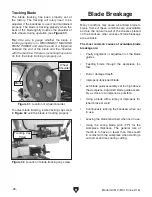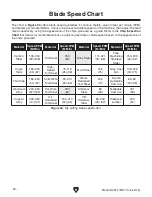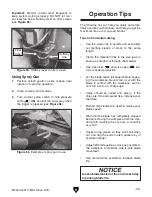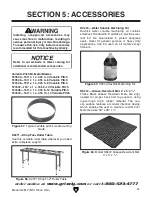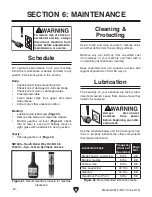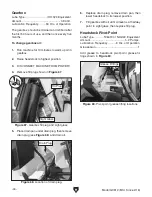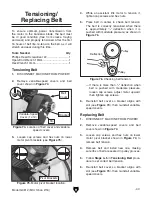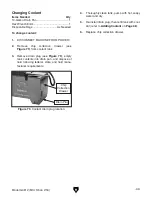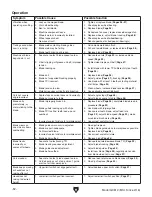
-40-
Model G0812 (Mfd. Since 2/16)
Workpiece
Inspection
Some metal workpieces are not safe to cut with a
metal cutting bandsaw; instead, a different tool or
machine should be used.
Before cutting, inspect the material for any of
the following conditions and take the neces-
sary precautions:
•
Small or Thin Workpieces: Small or thin
workpieces may be damaged during cut-
ting—avoid cutting these workpieces if possi-
ble. If you must cut a small or thin workpiece,
attach it to or clamp it between larger scrap
pieces that will both support the workpiece
through the cut. Some thin sheet metals will
not withstand the forces from this bandsaw
during cutting; instead, use a shear, nibblers,
or sheet metal nippers to cut these pieces.
•
Unstable Workpieces: Workpieces that can-
not be properly supported or stabilized with
the vise should not be cut on this bandsaw.
Examples are chains, cables, workpieces
with internal or built-in moving or rotating
parts, etc.
•
Material Hardness: Always factor in the hard-
ness of the metal before cutting it. Hardened
metals will take longer to cut, may require
lubrication, and may require a different type
of blade in order to efficiently cut them.
•
Tanks, Cylinders, Containers, Valves, Etc:
Cutting into containers that are pressur-
ized or contain gasses or liquids can cause
explosions, fires, caustic burns, or machine
damage. Avoid cutting any of these types of
containers unless you have verified that the
container is empty and it can be properly sup-
ported during a cut.
•
Magnesium: Pure magnesium burns eas-
ily. Cutting magnesium with a dull blade can
create enough friction to ignite the small
magnesium chips. Avoid cutting magnesium
if possible.
Содержание G0812
Страница 84: ......



